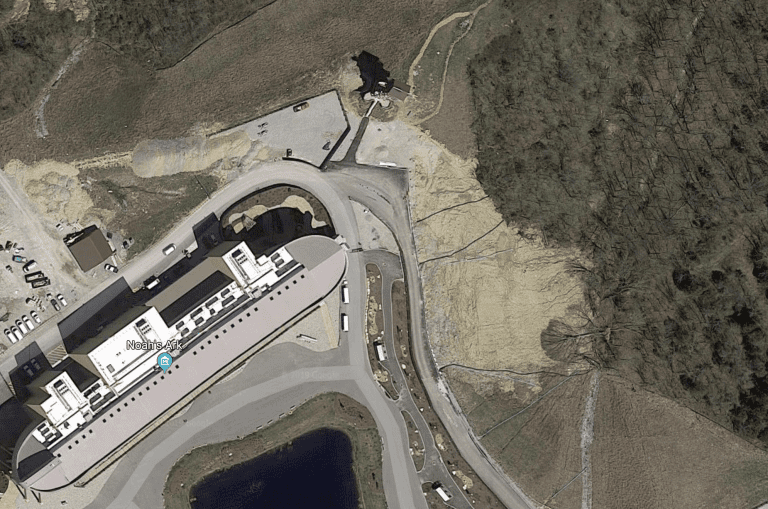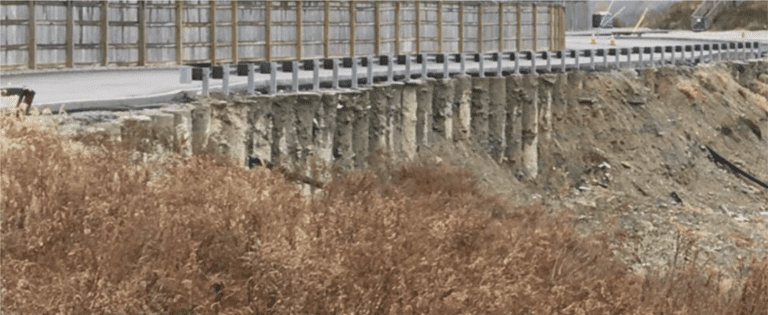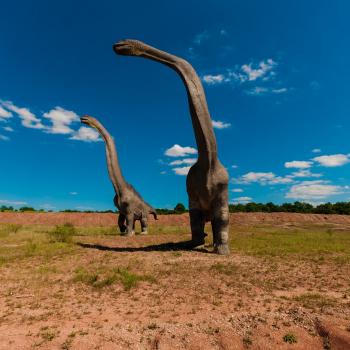A week ago, a headline started going around regarding flood damage at the Ark Encounter attraction in Kentucky. The Ark Encounter was suing over flood damage its insurance company was refusing to pay for, and commenters went all in on how hilarious this was. If you read past the headlines, you’d see that the damage was to an access road, and not to the ark itself. Further, Answers in Genesis wanted to make very clear that it was not flood damage, but rather rain damage.
It was looking at the pictures in one accompanying article that gave me pause, however.
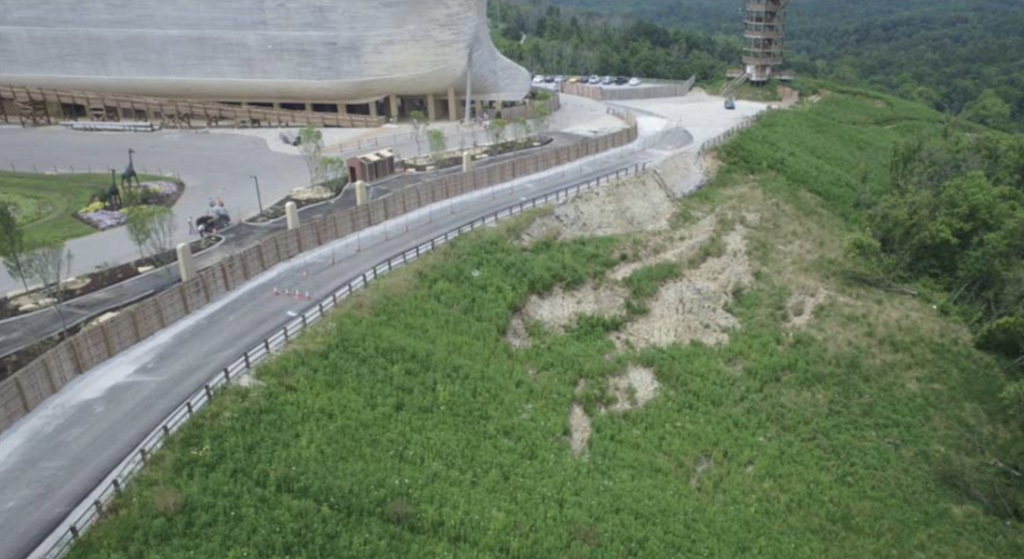
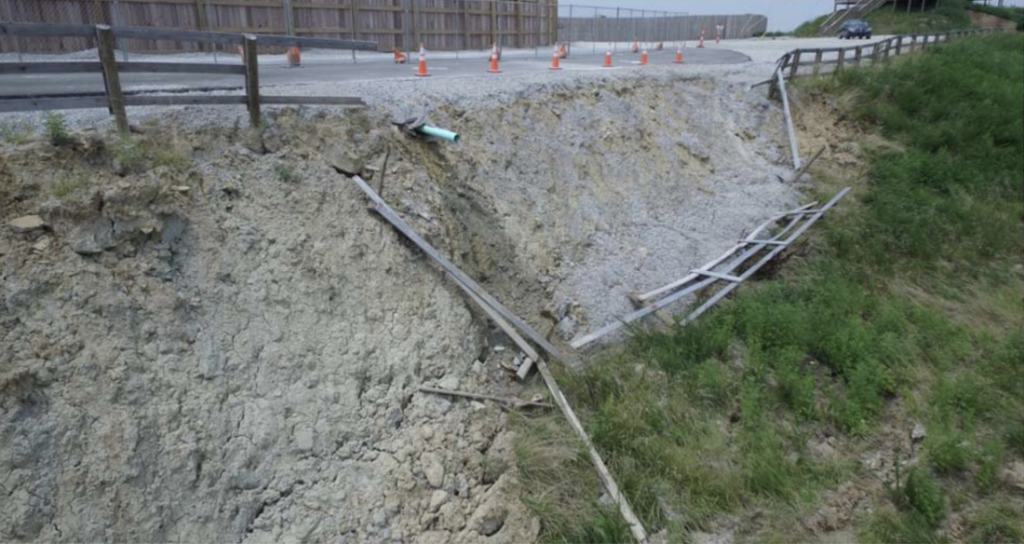
Here’s what confuses me: Did Answers in Genesis not know that erosion is a thing?
The below image on Google Maps, which appears to have been taken when the Ark was still being constructed, suggests that that entire area was completely eroded and denude of vegetation during construction. In fact, it appears that the erosion was so bad that it knocked over full grown trees at the bottom of the incline.
Scroll back up for a moment to note what they initially did with this area. It appears that they simply planted it with vegetation. Take special note of the fencing, too, and of what happened to the fencing. It looks like it was a simple wood fence. Now, I’m no engineer, but this feels inadequate to me.
Just the other day, my younger child asked me about an embankment all built up with laid bricks by the sidewalk. Why had they done that? He was curious. I explained about erosion, and told him that by bricking up the side of the slope, they could prevent the ground there from eroding down onto the sidewalk. Since he was interested, I proceeded to point out a number of areas where there were small retaining walls and other features designed to prevent slopes from eroding.
I find myself curious. Did the construction company or companies that Answers in Genesis used to build the Ark and develop the sounding grounds have an assessment of this area’s potential for erosion?
Mitigating the erosion, once the fence had collapsed and the road was no longer structurally sound, included creating a “drilled shaft retaining wall” to protect the wall. You can see a picture of this fence below.
If this were an access road at a random amusement park, collapsing within a year of the park’s opening, I’d assume there was some shoddy work—perhaps in a rush to open the park—and not think more of it. But this is the Ark Encounter. The entire thing is built around the idea of a massive global flood. For the Ark Encounter to be built with so little thought to something like water erosion—recall how close this access road is to the Ark itself—feels highly ironic, to say the least.
I read the lawsuit. The Ark Encounter’s insurance excludes “loss or damage” to “land or land values”; this exclusion does not include “the cost of reclaiming, restoring or repairing land improvements.” The insurance company ultimately agreed to cover the repair of the road, classifying it as “land improvement” that had been damaged and needed restoring. However, the company argues that it has no liability for the rest of the erosion mitigation, as it involves “correcting design deficiencies or shoddy workmanship.” In other words, they agree with my assessment above.
You’d think that, when constructing an amusement park based around the idea of a global flood, you’d take things like land erosion seriously during construction and the design of the grounds. But then, I suppose Noah didn’t have to do so. That land was all going to be eroded anyway. In that sense, the problem with the Ark Encounter’s design may not be its engineers’ lack of attention to land erosion, but its lack of an accompanying global flood.
I have a Patreon! Please support my writing!

